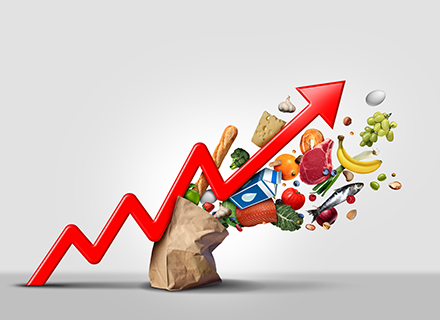The U.S. economy is still seeing price pressures but at a more moderate pace than in prior months. The latest data show consumer prices edged higher in August 2024, a small build on an overall moderate gain led by categories such as energy and housing. Yet even with this apparently contained boost, core inflation—a measure that excludes the volatile sectors of food and energy—stays sticky, indicating continued struggles for both consumers and policymakers.
The Consumer Price Index (CPI), which is the leading measure of inflation, advanced 0.2% in August after increasing by a no-insignificant amount since July. The CPI increased 3.7% on an annual scale, ticking up from a rise of 3.6%. The gain in consumer prices was driven by swings in gasoline prices and rental costs, while food prices remained stable.
The greatest increases came in energy, where gasoline prices went up noticeably, and heating oil and electricity costs climbed as well. The rising cost of fuel in particular has always been worrisome due to its wide-reaching effect on transport and production costs—directly influencing what consumers see at the register.
Renters are feeling the crunch as initial rental costs have risen significantly, contributing a lot to inflation in that category. This remains a critical issue for many, as the cost of shelter forms a large portion of most consumers’ budgets.
While headline inflation data showed some signs of slowing, core inflation still poses a challenge. Core inflation, which excludes volatile items like energy and food prices, increased by 0.3% month-over-month and by 4.1% year-over-year—indicating that there is broad-based upward pressure on prices in other parts of the economy.
The Federal Reserve faces a real dilemma. Despite a decline in headline inflation, core inflation remains stubborn, raising concerns that further rate hikes may be necessary. Currently, the Federal Reserve’s benchmark interest rate stands at 5.25% to 5.50%, its highest level in over two decades, but many economists expect a “wait-and-see” approach.
For consumers, rising inflation means a continued strain on household budgets, especially for those with lower incomes. Businesses are also feeling the pinch, facing rising costs of raw materials and labor, putting pressure on margins.
Looking ahead, inflation’s outlook remains uncertain. While energy prices and housing costs could remain elevated, some inflationary pressures may ease as supply chain disruptions resolve and demand cools. However, external factors like geopolitical tensions or energy market shocks could keep inflation elevated.
The U.S. economy stands at a crossroads, with consumer prices showing signs of stabilizing but core inflation persisting. The Federal Reserve faces the challenge of balancing economic growth with inflation control. Consumers and businesses should prepare for a prolonged period of uncertainty.



